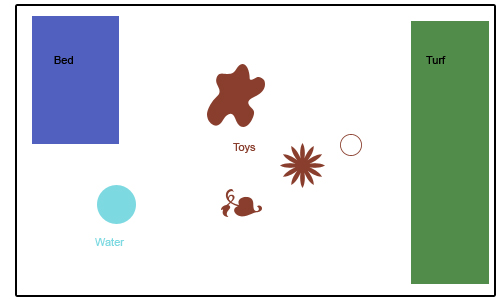Praise Kongs!
This post is part of the series in response to Dunbar’s 2012 Australian seminars. See index.
You didn’t have to be at Ian Dunbar’s seminar long to understand that Dunbar had a pretty big crush on Kong toys! To me, I think he was a bit biased – I think there’s a bunch of other chew toys highly appropriate for a similar purpose. But Dunbar mostly focused his attention on Kongs.
He suggested that every household, especially puppy households, should have Kongs, and advised that the largest dog in the household should determine the size of the Kong.
Why use Kongs?
Dogs who eat Kongs will automatically perform a bunch of desirable behaviours (and cease to display undesirable behaviours) by being given a Kong that serves as a distraction of sorts.
When dogs are eating from a Kong, they can’t be barking, they’re normally laying down, and the motion of eating decreases their stress. Eating from a food toy increases a dog’s confidence in being alone. Basically, they reduce behaviour problems by training your dog to create ‘good habits’.
Dunbar also argues that Kongs increase food drive, and encourage the dog to only chew ‘food wielding items’ (summed up in, “Why would I chew the furniture? It doesn’t have food in it.”). Continue reading





